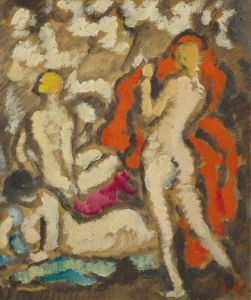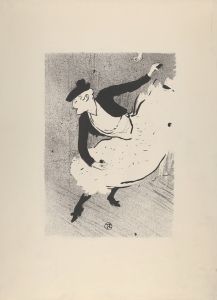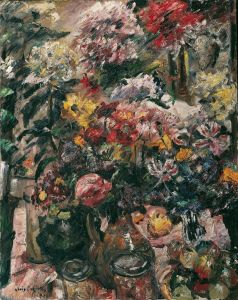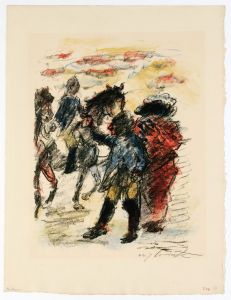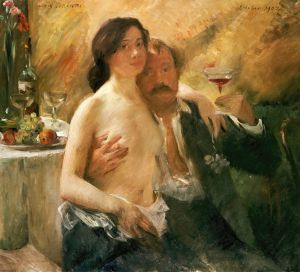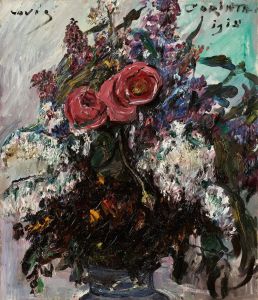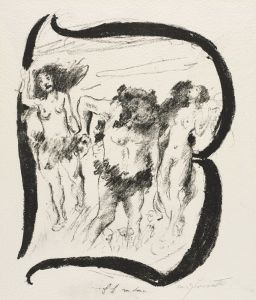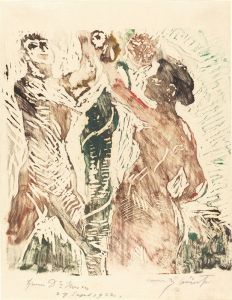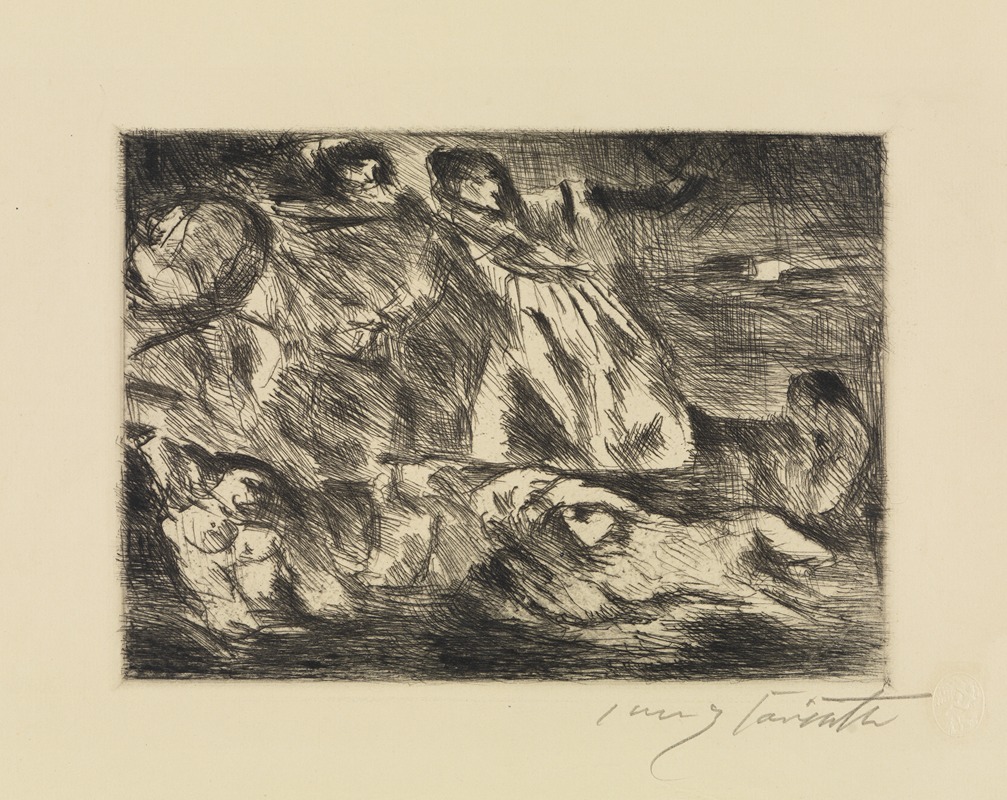
Dantebarke nach Delacroix
A hand-painted replica of Lovis Corinth’s masterpiece Dantebarke nach Delacroix, meticulously crafted by professional artists to capture the true essence of the original. Each piece is created with museum-quality canvas and rare mineral pigments, carefully painted by experienced artists with delicate brushstrokes and rich, layered colors to perfectly recreate the texture of the original artwork. Unlike machine-printed reproductions, this hand-painted version brings the painting to life, infused with the artist’s emotions and skill in every stroke. Whether for personal collection or home decoration, it instantly elevates the artistic atmosphere of any space.
"Dantebarke nach Delacroix" (translated as "Dante's Boat after Delacroix") is a painting created by the German artist Lovis Corinth in 1925. This work is a reinterpretation of the famous painting "The Barque of Dante" by the French Romantic painter Eugène Delacroix, originally completed in 1822. Corinth’s version reflects his admiration for Delacroix while showcasing his own distinctive style, which blends elements of Impressionism and Expressionism.
The painting depicts a dramatic scene inspired by Dante Alighieri’s "Divine Comedy," specifically the journey of Dante and the Roman poet Virgil across the River Styx in the Inferno. In Delacroix’s original composition, the two poets are shown in a small boat, guided by the mythological figure Phlegyas, as they navigate through turbulent waters filled with tormented souls. Corinth’s interpretation retains the central elements of this narrative but reimagines it with his characteristic bold brushwork, dynamic composition, and vivid use of color.
Lovis Corinth was a prominent figure in the German art world during the late 19th and early 20th centuries. Initially associated with the Berlin Secession, he developed a style that combined naturalistic detail with expressive, emotional intensity. By the time he painted "Dantebarke nach Delacroix," Corinth had already experienced significant personal and artistic transformations, partly influenced by a stroke he suffered in 1911. This event led to a shift in his artistic approach, resulting in works that were more experimental and emotionally charged.
Corinth’s homage to Delacroix can be seen as part of a broader tradition in art history, where artists reinterpret and pay tribute to the works of their predecessors. By revisiting Delacroix’s iconic painting, Corinth not only acknowledged the influence of Romanticism but also infused the subject with his own modern sensibilities. The result is a work that bridges the gap between the 19th-century Romantic movement and the early 20th-century Expressionist tendencies.
"Dantebarke nach Delacroix" is notable for its energetic execution and the way it captures the chaos and drama of the scene. Corinth’s loose, gestural brushstrokes and intense color palette convey a sense of movement and emotional turmoil, aligning with the themes of suffering and struggle inherent in Dante’s narrative. The painting serves as a testament to Corinth’s ability to reinterpret classical themes through a contemporary lens.
Today, "Dantebarke nach Delacroix" is recognized as an important example of Corinth’s later work and his engagement with art history. The painting is housed in the Kunsthalle Bremen, a museum in Bremen, Germany, which holds a significant collection of Corinth’s works.






